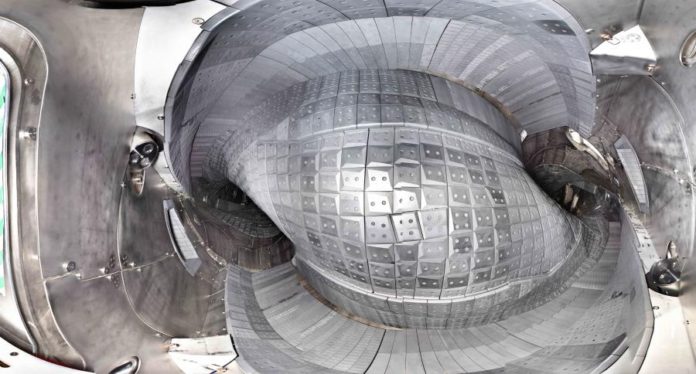As the first full campaign of the world’s largest and most powerful stellarator comes together, physicists from the U.S. Department of Energy’s (DOE) Princeton Plasma Physics Laboratory (PPPL) are brought in to make use of their expertise. Wendelstein 7-X (W7-X) is the name of the magnetic confinement fusion experiment that took place in Germany. The facility is now investigating the suitability of its optimized magnetic fields to create steady state plasmas and to be used as a model plant for producing this “star in a jar”, clean energy source.
The W7-X ran from December 2015 to March 2016 and since then has been upgraded in preparation for this new, high-powered campaign. Those that will be heavily involved in the new project include PPPL physicists Sam Lazerson and Novimir Pablant, who will be spending two years studying over at the Max Planck Institute of Plasma Physics in Greifswald in Germany.
When the W7-X was in operation previously, Lazerson was responsible for mapping its magnetic fields. This time he will be heading a task force that will be responsible for carrying out some experiments on the stellarator. Pablant, on the other hand, has designed an x-ray crystal spectrometer that will record the behavior of W7-X plasma.
“This will be the first run of the machine in its designed configuration,” confirmed David Gates, head of the stellarator physics division at PPPL and overseer in the W7-X project. During the new run, a device called an “island diverter” will be tested for exhausting thermal energy and impurities.
The heating power of the stellarator will also be increased in the new run to a total of eight megawatts to allow for operation at a higher beta which is essential for plasma confinement. As confirmed by Gates, “The goal is to increase plasma confinement compared with traditional stellarators.”
Moving forward the team of Max Planck engineers will be looking to install a 2scraper element” to add to the W7-X after the initial 15-week campaign has ended. Then, the ability of the of the unit will be tested in the next phase, as well as the installation of the water-cooled diverter in 2019 which will increase the allowable pulse length of the stellarator.
More News to Read
- Do Physicists Need to Change the Way They Measure Quantum States?
- Researchers Discover Response in Liver Could Actually Help Treat Alcoholism
- Ancient Nova Explosion Recovered by 580-year-old Korean Recording
- Scientists Use VLA to Measure Galaxy’s Magnetic Field Billions of Light-Years Away
- Who Said Oil and Water Don’t Mix? New Study Suggests Otherwise

